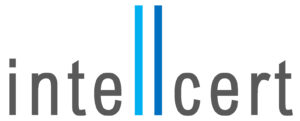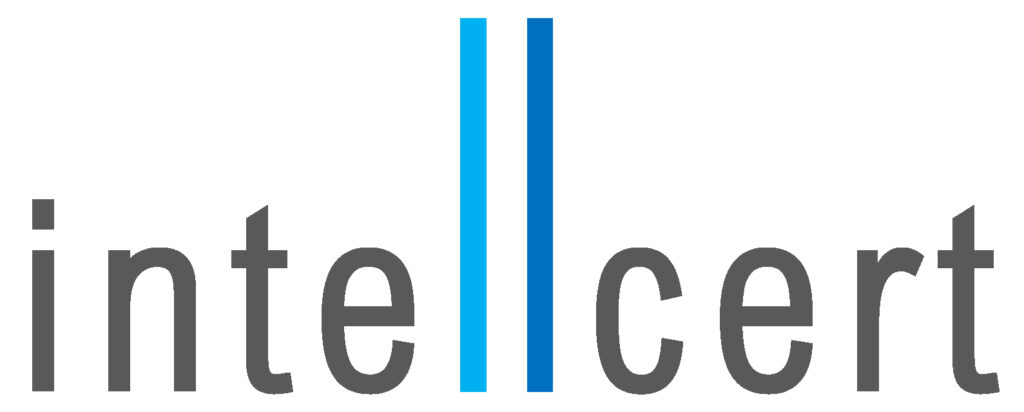Frequently Asked Questions about ISO 45001 Certification
What does ISO 45001 entail?
ISO 45001 is an international standard for Occupational Health and Safety Management Systems (OHSMS). It establishes requirements that organizations must fulfill to prevent work-related accidents, protect the health and safety of employees, and ensure that working conditions are safe and conducive to health. The standard encompasses various aspects, including:
- Context of the organization: Understanding the context and risks related to occupational health and safety and responding to them.
- Leadership: Demonstrating strong leadership and commitment to occupational health and safety.
- Planning: Setting objectives and planning measures to prevent injuries and illnesses in the workplace.
- Support: Ensuring that the organization provides necessary resources and supports employees to work safely and healthily.
- Operation: Establishing and implementing processes to ensure that working conditions are safe and health risks are minimized.
- Performance evaluation: Monitoring, measuring, analyzing, and evaluating performance in occupational health and safety.
- Improvement: Making continual improvements based on assessments and analyses to continuously enhance working conditions and employee health.
ISO 45001 is aimed at helping organizations create a safe and health-promoting work environment and minimize work-related accidents and illnesses.
What are the objectives of an Occupational Health and Safety Management System according to ISO 45001?
An Occupational Health and Safety Management System (OHSMS) according to ISO 45001 have several objectives:
- Prevention of work-related accidents and occupational diseases: To prevent or minimize work-related accidents and occupational diseases.
- Protection of employees: Ensuring that working conditions are safe and employees’ health is protected.
- Compliance with laws and regulations: Ensuring that the organization complies with all relevant laws and regulations regarding occupational health and safety.
- Continuous improvement: Continuously improving working conditions and employee health by constantly seeking opportunities to mitigate risks.
- Involvement of employees: Ensuring that all employees can contribute to safety and health through training, communication, and involvement in the organization.
- Reduction of downtime and costs: A well-managed OHSMS can help reduce work-related accidents and illnesses, leading to less downtime and lower costs.
What is the difference between ISO 45001 and OHSAS 18001?
The main difference between ISO 45001 and OHSAS 18001 lies in their approach to occupational health and safety management. Here are the key differences:
- Structure and approach: ISO 45001 is based on the High-Level Structure (HLS), providing a uniform management structure scheme for all ISO management system standards. In contrast, OHSAS 18001 follows a standalone structure. Therefore, ISO 45001 seamlessly integrates with other ISO management systems such as ISO 9001 (Quality Management) and ISO 14001 (Environmental Management).
- Risk-based thinking: ISO 45001 places a stronger emphasis on risk-based thinking and risk management in occupational health and safety. Organizations must identify potential hazards, assess risks, and take appropriate measures to mitigate risks. OHSAS 18001 also required risk assessments, but ISO 45001 emphasizes this requirement and integrates it more deeply into the system.
- Involvement of employees: ISO 45001 emphasizes the involvement of employees in the occupational health and safety management process more than OHSAS 18001. It requires employees to be consulted and actively involved in decisions affecting their health and safety in the workplace.
- Context of the organization: ISO 45001 requires a more thorough analysis of the organizational context and the needs of relevant interested parties. This means that companies must consider their specific internal and external influences as well as the expectations of stakeholders.
- Performance indicators: ISO 45001 places a stronger emphasis on the use of key performance indicators (KPIs) to measure and evaluate the performance of the occupational health and safety management system. This enables more effective monitoring and continuous improvement of performance in occupational health and safety.
- Communication and documentation: ISO 45001 highlights the importance of communication and documentation, particularly regarding the exchange of information about occupational health and safety between different levels and functions of an organization.
In summary, ISO 45001 offers a modernized and more comprehensive approach to occupational health and safety management, based on current best practices and allowing for closer integration with other management systems.
What is an ISO 45001 certification?
An ISO 45001 certification is a formal process where an independent certification body verifies and confirms a company’s compliance with the requirements of the ISO 45001 standard. It is evidence that the company’s Occupational Health and Safety Management System (OHSMS) meets internationally recognized standards and that the company actively strives for the safety and health of its employees.
Who needs an ISO 45001 certification?
An ISO 45001 certification is beneficial for organizations of all sizes and industries that aim to improve the safety and health of their employees. Particularly, companies operating in industries with a high risk of work-related accidents and illnesses can benefit from certification. Typically, companies in industries such as construction, manufacturing, mining, transportation, and healthcare are interested in ISO 45001 certification.
How does one become ISO 45001 certified?
To become ISO 45001 certified, an organization must go through several steps:
- Preparation: The organization must assess its current work practices, identify work risks, and develop an Occupational Health and Safety Management System (OHSMS).
- Implementation: The OHSMS is implemented, and employees are trained and involved in workplace safety and health measures.
- Internal audit: Before certification, the organization must conduct an internal audit to ensure the effectiveness of the OHSMS.
- Certification audit: An independent certification body conducts a certification audit to verify the conformity of the OHSMS with the requirements of ISO 45001.
- Certification: If the company meets all requirements, it will be issued the ISO 45001 certification.
What are the benefits of ISO 45001 certification?
ISO 45001 certification offers several benefits, including:
- Improved employee health and safety: By implementing an OHSMS, organizations can improve working conditions and reduce the risk of work-related accidents and illnesses.
- Legal compliance: ISO 45001 helps organizations comply with all relevant laws and regulations regarding occupational health and safety.
- Reduction of downtime and costs: A well-managed OHSMS can help reduce work-related accidents and illnesses, leading to less downtime and lower costs.
- Improved image and credibility: ISO 45001 certification signals to customers, employees, and other stakeholders that the company actively promotes the safety and health of its employees, which can enhance the company’s image and credibility.
- Access to new markets: In some industries, ISO 45001 certification is a requirement to enter certain markets or attract business partners.
- Increased employee motivation and retention: A safe and health-promoting work environment contributes to employee satisfaction and retention, which can boost employee motivation and productivity.
What is the process of ISO 45001 certification?
The process of ISO 45001 certification involves several steps:
- Preparation: The organization prepares for certification by developing and implementing its OHSMS.
- Implementation: The OHSMS is implemented, and employees are trained.
- Internal audit: The organization conducts an internal audit to ensure the effectiveness of the OHSMS.
- Certification audit Phase 1: An auditor from the certification body reviews documentation and the OHSMS.
- Certification audit Phase 2: A comprehensive audit is conducted to assess the effectiveness of the OHSMS in practice.
- Certification: If all requirements are met, certification is issued.
What is examined in ISO 45001?
During an ISO 45001 certification, various aspects of the Occupational Health and Safety Management System are examined, including:
- Risk assessment and risk management: The organization must identify, assess, and develop appropriate measures to mitigate work risks.
- Compliance with laws and regulations: It is checked whether the organization complies with all relevant laws and regulations regarding occupational health and safety.
- Training and awareness: It is assessed whether the organization raises awareness among its employees and provides training on safety and health issues.
- Emergency preparedness and response planning: It is verified whether the organization has adequate emergency preparedness and response plans to respond to accidents and emergencies.
- Continuous improvement: It is checked whether the organization is continuously striving to improve its OHSMS and safety practices.
How much does ISO 45001 certification cost?
The costs of ISO 45001 certification can vary depending on the size and complexity of the organization. The costs may include:
- Consultation fees: Organizations needing assistance in developing and implementing their OHSMS may require consulting services, incurring additional costs.
- Training costs: Training employees for the implementation and maintenance of the OHSMS can incur costs.
- Certification fees: The certification body charges fees for conducting certification audits and issuing certification.
- Internal resources: The organization must allocate internal resources for the implementation and maintenance of the OHSMS, which can incur additional costs.
The costs of ISO 45001 certification depend on various factors, including the size and complexity of the organization, the number of locations, and the need for consulting services. Typically, the costs of ISO 45001 certification can range from several thousand to several tens of thousands of euros. It is important to carefully consider the various cost components and compare offers from different certification bodies to find the best cost options.
Do I need ISO 45001 consultation?
The need for ISO 45001 OHSMS consultation depends on various factors, including the existing resources and expertise within the organization, the complexity of the OHSMS, and the timelines for implementation. OHSMS consultation can be helpful in expediting implementation, providing expertise, and ensuring the effectiveness and efficiency of the OHSMS. Organizations should carefully weigh the pros and cons of consultation and decide whether they require additional support.
What does a certification cycle mean?
A certification cycle for ISO 45001 is typically three years. During this time, the Occupational Health and Safety Management System undergoes annual surveillance audits to ensure continued compliance with the requirements of the standard. At the end of the certification cycle, the organization must undergo a recertification audit to extend certification for another three years.
How long is a certification cycle?
A certification cycle for ISO 45001 is typically three years. During this time, the Occupational Health and Safety Management System undergoes annual surveillance audits to ensure continued compliance with the requirements of the standard. At the end of the certification cycle, the organization must undergo a recertification audit to extend certification for another three years.

